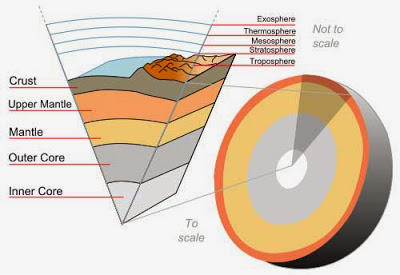
For many years geophysicists have argued over the perplexing mystery regarding the amount of silicon in the Earth’s mantle that is thought to have arrived there via impacts with asteroids.
The problem is that tests done to determine the composition of the mantel have found that there appears to be less silicon in it proportionally, than there is in asteroids. Now new research by a Japanese team suggests that the lowest section of the Earth’s mantle has more silicon in it than does the upper parts, perhaps solving the mystery. They have described their work in their paper published in the journal Nature.
To help clarify what lies far beneath our feet, geophysicists have subdivided the Earth’s mantle into three broad sections: the upper, middle and lower mantle. The upper mantle describes the crust and approximately 400 km below. The middle is about 250 km thick and the lower goes to about 2,900 km in depth.
The upper mantle is far easier to study of course, due to its proximity and thus the proportion of silicon in it is well understood. Not so well understood has been the composition of the middle and lower mantles. To study them, researches generally use seismic data recorded by sending shockwaves into the ground, but doing so thus far, has led more often to speculation than good science.
To get a better handle on what is happening so far beneath the Earth’s surface the Japanese team took a different approach; instead of trying to measure the lower mantle itself, they sought to recreate it in a lab where it could be measured much more easily. To do that, they mixed the ingredients (mainly silicate perovskite and ferropericlase) they believe exist in the lower mantel and placed them in a pressure chamber. There the sample was subjected to different pressure levels consistent with current theories describing the differing degrees of pressure at different levels of the mantle. They then applied the same seismic tests normally done on the real mantle. In so doing, they have come to believe that the lower mantle has a volume that is approximately 93% silicate perovskite, which when compared with data describing the upper crust gives an average amount of silicon for the entire mantle that is very nearly equal to that found in asteroids. Thus, the mystery, they say is solved.
More information: Nature 485, 90–94 (03 May 2012) doi:10.1038/nature11004
Note : The above story is based on materials provided by © 2012 Phys Org










